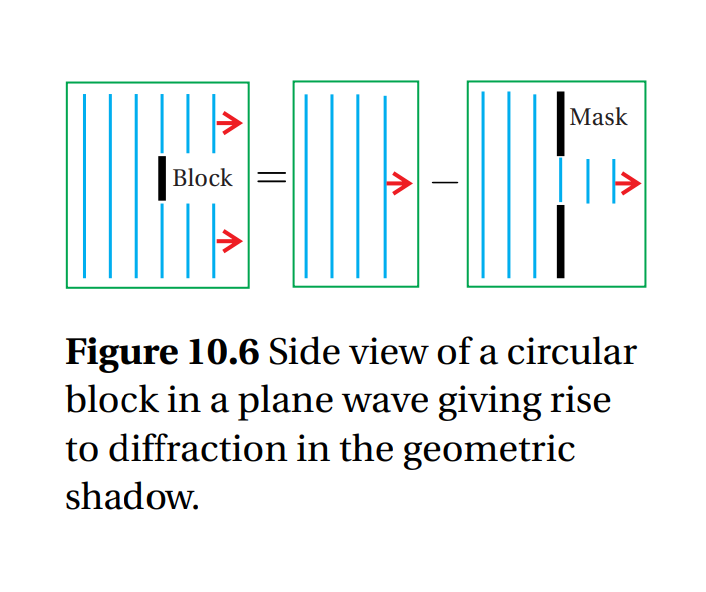There is a slight conflict going on in my various physics books regarding the apparatus of Young double slit experiment and single slit diffraction. In some books they have written that a lens must be placed in between the slit plane and the screen and the screen should coincide with the focal plane of the lens. Thus is important as the lens ensure that the rays converge on the lens but some books ignore the discussion of lens. So I am confused if the lens is removed then would we be able to see the interference/diffraction pattern on the screen.
-
1$\begingroup$ The lens is only there to bring the diffraction focused onto a screen so you can watch it; I think if you looked straight in to the diffraction pattern you would project its image onto your retina by your own crystalline lens; same idea. $\endgroup$– hyportnexCommented May 10, 2022 at 2:27
-
$\begingroup$ I think the lens is only there so that the setup is smaller/shorter .... typical DSE distances with no lens are in the meters range 2 to 10 which is inconvenient. $\endgroup$– PhysicsDaveCommented May 10, 2022 at 15:09
4 Answers
Nope. You don't need to place a lens between your slit plane and your screen for either a Young's double slit setup or for a typical single slit setup. Rays will automatically "converge" on their own due to diffraction. We can think about that in terms of Huygens' Principle, where instead of rays, you represent light as a bunch of little wavelets like below.
These particular wavelets represent the PEAK of a wave, so wherever the wavelets intersect, you get constructive interference. In the correct place in between them, you get destructive interference. And voila. A single slit diffraction pattern.
The only reason I could think of for HAVING a lens would be to have a converging lens focus an interference pattern town to a smaller area (say, if you want to save a meter wide interference pattern on a 5 mm CCD chip).
You can actually prove this yourself with a hair and a laser pointer. Because of Babinet's Principle, a slit in the middle of a barrier gives pretty much the same diffraction pattern as just a barrier of the same size as the slit.
So if you hold a hair straight up through the middle of your laser beam right next to the pointer, you'll get the same diffraction pattern out as you would have if you'd shot the beam through a single slit of the same size.
-
$\begingroup$ will the lens being placed in the way not cause a change in path difference between the rays that superimpose at a point (on the screen), because the 2 waves now travel different distances through the lens? and also because one of the rays will now bend with respect to the other and take a longer/shorter path? $\endgroup$ Commented Sep 9, 2022 at 6:38
You do not need a lens in a slit experiment to see the interference pattern. You just need a laser, a slit or wire and a screen to project it on. You will see the interference pattern on the screen.
-
$\begingroup$ And in diffraction eg single slit diffraction or diffraction from a circular aperture is it same case? $\endgroup$– ArpanCommented May 10, 2022 at 8:15
-
$\begingroup$ @Arpan Correct, you do not need a lens for any of them. Even a single edge will project a diffraction pattern on to a screen without a lens. $\endgroup$ Commented May 10, 2022 at 14:12
The simple double and single slit formulas assume that all the rays that arrive at a given point on the screen leave the slits at the same angle. This condition can be met by using a converging lens or closely approximated if the distance to the screen is large relative to the slit width or separation. (It is also assumed that all of the rays are in phase when they leave the plane of the slits.)
A double slit arrangement is shown below with the single slit often omitted is the light source is a laser.
You will note that interference occurs everywhere to the right of the double slit so putting a screen in that region will produce a fringe pattern.
If a laser is used the fringe pattern is very easy to see.
The effect of the addition of a lens is shown below.
On a screen will be observed the image of the fringe pattern of the fringes which are formed in the object plane of the lens.
Before the easy availability of lasers the light sources which were used were of much lower intensity thus the fringes were much more difficult to observe as they tended to be of very low intensity.
An experimental setup is shown below where a lens (system), the microscope, is used to observe (and measure) the fringe pattern.





